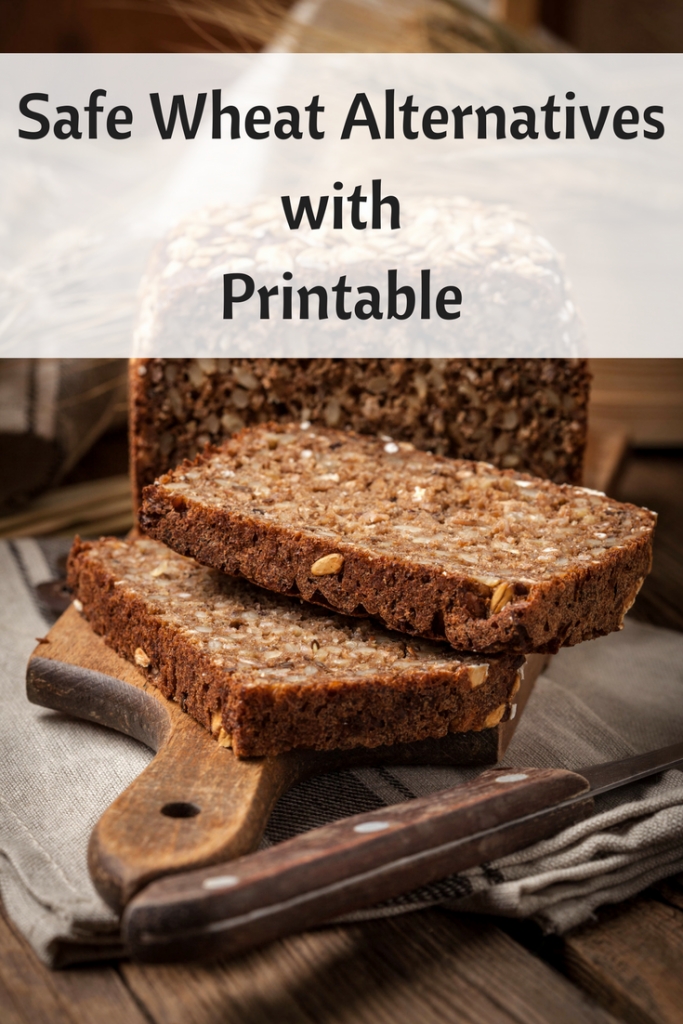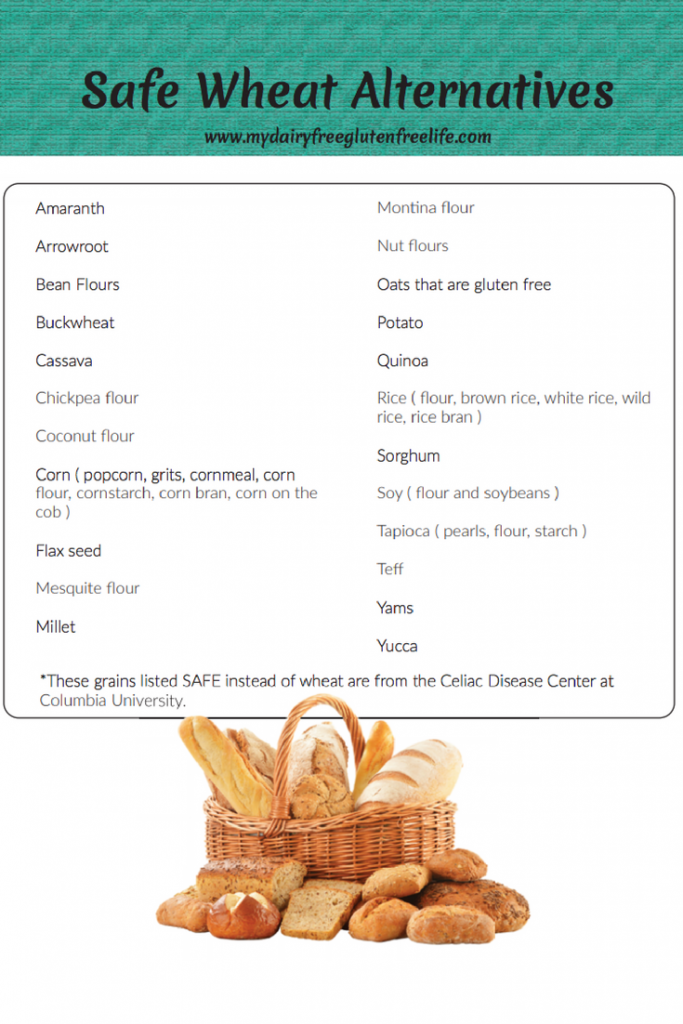Safe Wheat Alternatives:
Know the Hidden Wheat & Gluten Sources
Do you know what safe wheat alternatives are, where to find the hidden wheat and gluten sources? When you eat Gluten Free you have to know that there are items in foods that contain gluten but don’t say gluten on the labels. For some who don’t tolerate gluten, eating a bit of wheat or gluten will produce mild symptoms that are inconvenient at worst. For others, ingesting such foods can be life threatening. How can you be certain that the foods you’re eating are free from wheat and gluten? First, read ingredient labels when shopping. Never make assumptions. Check below for our printable Safe Wheat Alternatives.
There are many food items on the market that contain wheat or wheat gluten, but you’d never guess it from looking at them. Also, when reading labels, know what to look for. There are lots of ingredients listed that don’t have the words “wheat” or “gluten” in them. Check our Safe Wheat Alternative printable below!!
The following is a list and brief description of ingredients to avoid:
Hydrolyzed Plant Protein or Hydrolyzed Vegetable Protein (HPP or HVP) – These are not acceptable because it doesn’t identify what the plant source is. Under new laws, the plant source must be identified, as in Hydrolyzed Corn Protein.
Modified Food Starch – There’s no requirement for identifying the plant source, but if wheat is being used, by law it needs to be labeled as Modified Wheat Starch.
Natural and/or Artificial Flavorings – Sometimes hydrolyzed protein may be used for flavoring, and sometimes barley, malt or rye derivatives are used for flavoring. It’s best to contact the manufacturer to find out if they’re adding any type of barley malt/syrup or extract to their flavoring, and what type, if any, of hydrolyzed protein is being used.
Starches – Often used as binding agents and thickeners in seasonings, in the US, starch refers to corn. If other starches are being used, they must be identified.
Dextrin – Also used as a thickener, dextrin can be made of corn, rice, tapioca, wheat or potato. If wheat is used, it should be identified as Wheat Dextrin
Individual spices – Individual spices won’t contain gluten, but a mixture might carry wheat starch as a binding agent. It will be noted on the label.
Previously, some ingredients were viewed as suspect, but are now considered to be gluten-free. They are:
Glucose Syrup
Carmel Coloring
Citric Acid
Distilled Vinegars (Malt Vinegars are NOT gluten free)
When dining out, make sure you ask plenty of questions. You can call ahead and ask for information regarding wheat and gluten free menu items, or if you’ll be eating at a well-known chain restaurant, you can check out their website for wheat and gluten free menu details.
Many fine restaurants (and even fast-food restaurants) make a point of providing this information to their customers. When you’re out – and in need of a snack – make sure you have gluten and wheat-free snacks available, they can be homemade or purchased online and at health food stores.
When you’ve been invited to a friend’s for dinner, mention beforehand that you eat a wheat and gluten free diet. They will appreciate the heads up, but may need to be educated about what that entails.
Check out my post on What is Gluten In? It will give more information and a list of GOOD grains that won’t give you any problems.
Click the image below to download and print our Safe Wheat Alternatives!


Leave a Reply